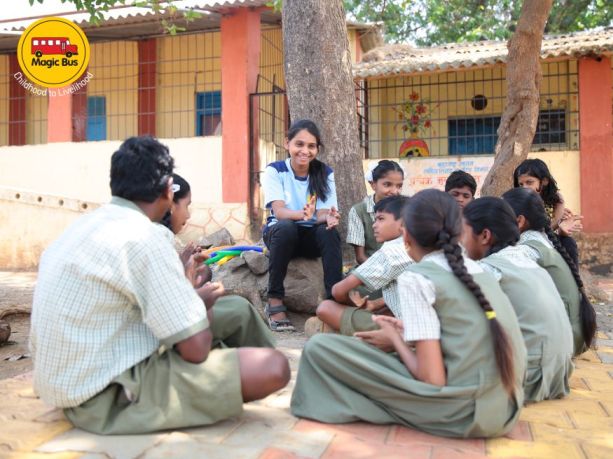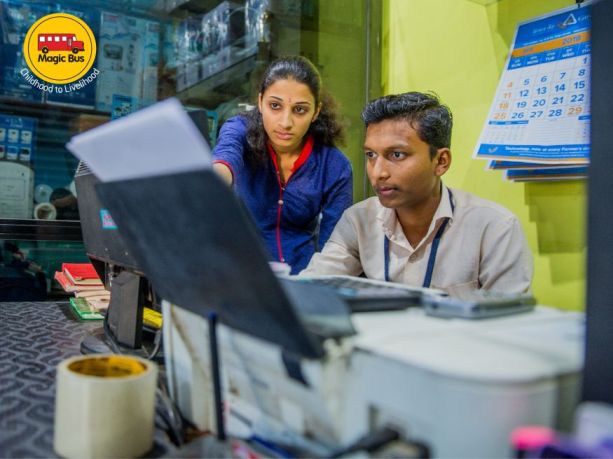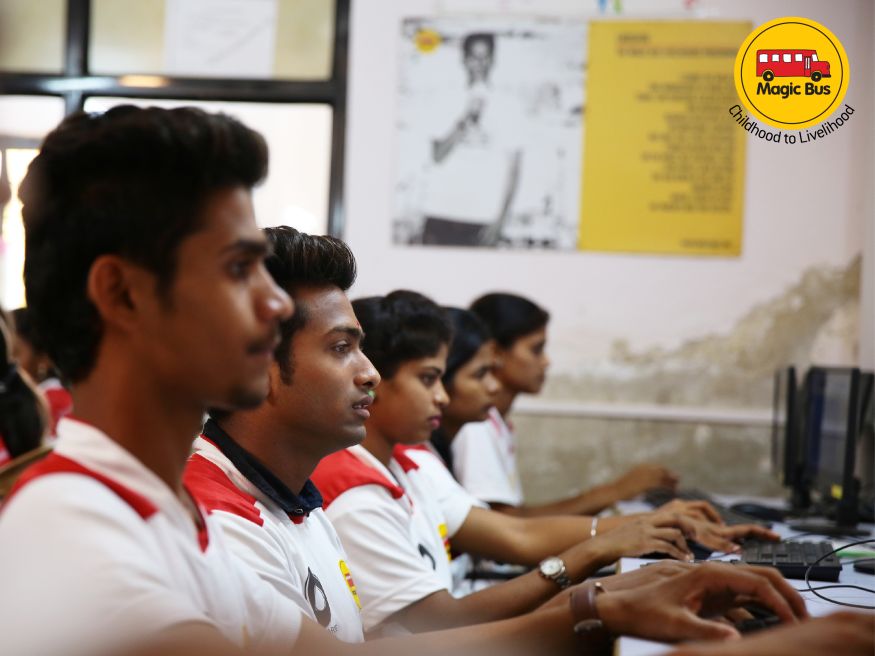Founded by Matthew Spacie in 1999, Magic Bus is one of the largest poverty alleviation programmes in India, working with more than 375,000 children and young people in 22 states and 77 districts of India. The organization equips children and young people in the age group of 12 to 18, with the skills and knowledge they need, to grow up and move out of poverty, and takes them from a childhood full of challenges to a life with meaningful livelihoods.
Magic Bus’ sports activity-based sessions are carried out across more than 798 schools, and works with India’s poorest children and young people. As Magic Bus celebrates its 20th anniversary, Global CEO Jayant Rastogi told us what the non-profit has in store. Excerpts from an exclusive interview published in the latest issue of our magazine.
Q 1. Congratulations on 20 years of Magic Bus. Take us through the 20-year journey.
It was what our founder Matthew Spacie had envisioned in 1999. From 3000 children in 1999 in Mumbai, Magic Bus has transformed into a much bigger organization, now having impacted more than one million children and young people in India helping them move out of poverty. We equip children and young people in the age group of 12 to 18 with the skills and knowledge they need to grow up and move out of poverty, taking them from a childhood full of challenges to a life with meaningful livelihoods.
Since its inception, where we were merely providers for these children helping them grow, advance in life and lead comfortable lives; we needed a holistic approach to ensure sustainability. The Magic Bus childhood to livelihood programme is now a 7-year long journey holding the child’s hand from the age of 12 to prepare them to be successful, economically empowered and free of poverty.

The programme enables the child to fend off destabilisers, such as child marriage and child labour ensuring they complete their secondary education and turn them into first-generation salary earners having secure careers in the organised sector. In the last twenty years, we have achieved what we set out to attain. In the current year, 375,000 children are on this journey of moving out of poverty in 22 states and 80 districts of India.
Q 2. What is different about Magic Bus in the way it approaches child development? How did the non-profit organisation grow from a sports-led programme into a global do-gooder?
We believe in a holistic plan that takes care of the overall development of children that also helps them evolve into thinking minds. We help them remove hindrances, and eventually earn a living, besides getting educated, not merely become
literate. The purpose of which is to prepare students to meet the challenges of living as well as academics. Our approach has key components such as Life Skills, Education Enhancement, Employability Skills Education, Livelihood and Community Connect.
We have a much larger role to play now, wherein the children are imparted basic literacy & spoken English, are taught teamwork, problem-solving, managing self, learning to learn and communications; financial and digital literacy, digital literacy, career awareness; sector-specific training in Retail, IT, BFSI, e-commerce; placement and postplacement support; engage with parents and the whole community to build support for children’s aspirations.
Q 3. Are there any existing or future partnerships planned with the government?
Magic Bus works in most of the government schools across the country. As an NGO we bring the skill and government brings in the scale. We have existing partnerships with the Government of Maharashtra, Mizoram and other state governments. Our partnership with the Government of Maharashtra will enable an outreach of 150,000 children through an expansion of our existing adolescent education programme. The focus will be on training teachers to deliver life skills and empowering community leaders to create an ecosystem to enable children to complete their secondary education.
In Aurangabad district we have partnered with UNDP to implement a Youth Employment Exchange focused on peri-urban locations. This partnership has been very successful for us as we have placed more than 1000 young women in jobs over a short period of 9 months. Partnering with the government helps accomplish a common goal of growth expansion and we look forward to future partnerships.
Q 4. Many CSR programmes start out with the best intentions and funding, yet fail to make an impact. What gaps do you see in the implementation of CSR programmes?
Our top priority is on impact; to ensure all children on our programme complete their education, delay their age of
marriage, and get the skills to enter organised work – in order to move out of poverty. To do this at scale, we have
brought technology to help our delivery team deliver the programme meticulously.
Our monitoring apps help our M&E teams track the programme rigorously. With this, we create impact at scale and can take our current outreach number of 3.75 lakh children and young people to 16 lakh children and young people in the next 5 years.
Most of the gaps evident in implementation are because there are no processes in place and neither technology to support the scale up. Magic Bus is very focussed on both: quality of programme delivery and achieving impact at scale.
Q 5. In light of the expanding scope of CSR today, what can corporate companies learn from nonprofits?
NGOs have the opportunity to be more business-like in their approach and there is a lot to take away from corporates, but corporates too stand to learn from the development sector. Unlike any corporate, where everything is built around
maximising profitability, we address specific challenges, involve people from the communities, and contextualize, based on geography and cultural norms. We, therefore, tailor our programmes for the communities we work with.

For instance, Magic Bus training programmes provide training for girls who may want to be employed in non-traditional roles, such as Uber drivers, solar energy mechanics, technicians etc., but since we realise that the same programme cannot be replicated in a non-metro location, even if there are girls who want to join the programme, we may not be able to find enough employers who are willing to hire them. This insightful information, helps us add more layers to the intervention should we decide to move it.
Then compared to corporates, there is an absence of readily available data and we need to consistently devise solutions and approaches and work towards our project goals, all along tweaking and adjusting our programmes. NGOs thus innovate and take on big problems to tackle. Nonprofits also lean towards having empathetic leadership.
Q 6. Which partnerships and projects is your team most enthusiastic about?
Innovation is in our DNA. We at Magic Bus are always innovating to better the quality of programme and to create a stronger and bigger impact on our participants:
• Our education system does not make our adolescents ready to enter the world of work. Hence we needed a programme to address this. In partnerships with Google, we are introducing an Employment Education programme that will make adolescents in the age group of 15-18 work-ready.
• While we do very well in livelihood programme, we know that almost 70% of our population lives in rural India, where the opportunity for business is higher. To address this, we have introduced an entrepreneurship programme for our young people.
• To scale up our livelihood programme in peri-urban locations, we have partnered with UNDP to implement a Youth Employment Exchange. We are doing this through a job portal.
• Through an immersive approach we are working closely with the school teachers to deliver our adolescent education programme in the districts selected for this programme.
Q 7. In recent years, you’ve expanded beyond India and now have affiliate programmes in Nepal, Myanmar and Bangladesh, among others. What is your vision for the next decade?
We have an ambitious expansion plan for the next decade. We are currently working with 3.75 Lakh children and young people and our goal is to take this number up to 16 lakh children and young people in the next 5 years ensuring their continuity
from education through to livelihood. We will do this with a focused approach where we will work with almost all adolescents in government schools / districts where we are already present.
We are working with two of the state governments to support us in this scale-up. We are also looking at introducing an employability education model to children in the 15-18 age group. We are targeting a world where children break out of poverty and lead fulfilling, rewarding lives, contributing positively to their community and to the world around them.
Q 8. What does your programme Childhood to Livelihood entail?
Children on the Magic Bus Childhood to Livelihood programme successfully fend off destabilisers such as child marriage and child labour. They complete their secondary education and go on to become first-generation salary earners having secure careers in the organised sector. Our youth-centered Livelihoods Programme connects the aspirations and potential of young people to available market opportunities. We build their employability skills and map job potential based on individual strengths and mobility.

We work with support structures like parents, the community at large and local government institutions to ensure social, emotional and economic well-being for all young people living in that area. We work with the local community who have a better knowledge of the local issues. We involve selected members from the community as youth leaders who are role models in their community. Our approach mobilises the entire ecosystem available to the child or young person to create transformational change in their lives.
Change takes time and we understand this. Which is why we are perhaps the only NGO to accompany a child in her journey from school to a sustainable livelihood. This journey spans 7 years beginning at age 12 where we can ensure impact is created.
This approach enables children to complete their education, delay their age of marriage, and get the skills to enter organised work – in order to move out of poverty.
This interview appeared in the October 2019 edition of our print magazine

